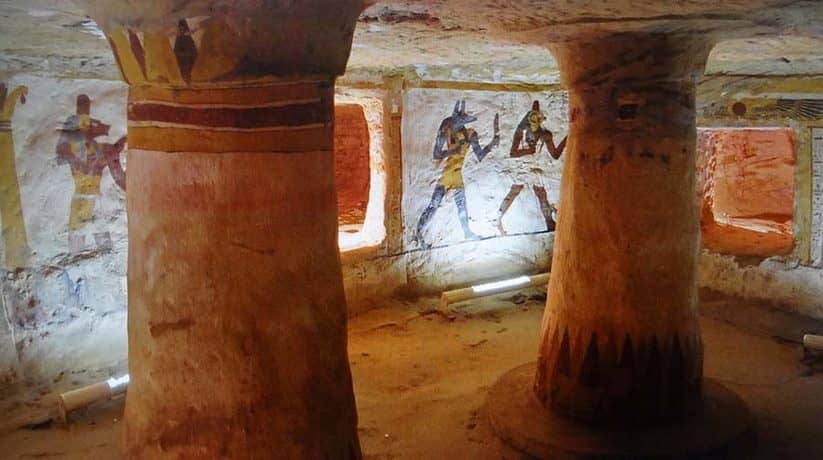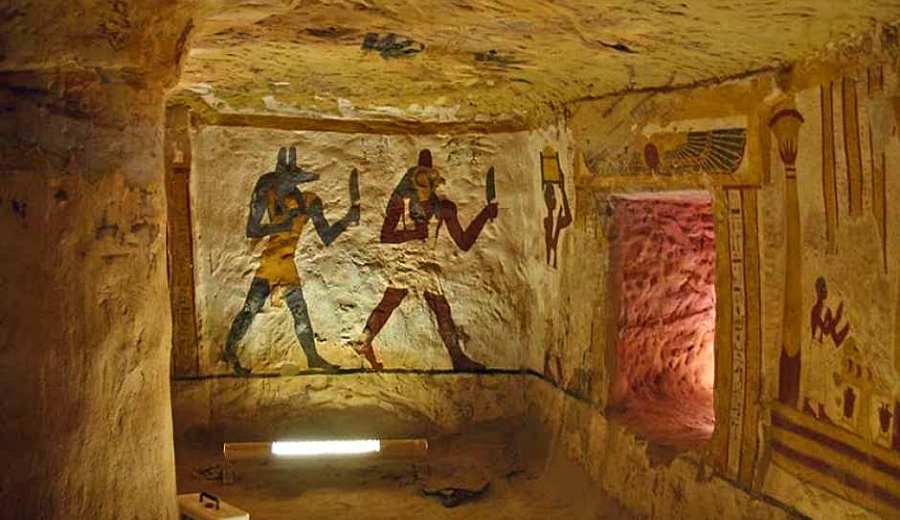Sun 20 February 2022:
Tomb of Bannentiu, which sheds light on the ancient history of Egypt, attracts the attention of tourists as well as scientists with its historical and cultural value, Reuters reports.
The 2,600-year-old rocky area, discovered 84 years ago by the Egyptian archaeologist, Ahmed Fakhry, in the Bahariya Oasis, located near the Egyptian city of Giza, takes its name from the tomb of a great merchant of the time, Bannentiu.

The rocky region, located near the three great pyramids and the Sphinx in Giza, consists of four sections which were carved into the rocks.
The place, which also includes cemeteries, consists of north and south entrances, which can be reached by descending from a six-meter-deep well.
The entrance of the place opens to a four-column hall, where there are three side rooms next to the hall as the drawings and writings on its walls provide information about history.


Belonging to the 26th dynasty, which ruled in Egypt approximately 2,600 years ago, the tomb draws attention with its depictions of the sun and moon cycles, which were attributed sacred importance by the Pharaohs.
Many historical and mythological figures from the pharaoh period stand out in the drawings, which include the mummification ritual.
Bannentiu rock is known as the most famous historical monument of Bahariya Oasis, containing the tombs of Bannentiu and his father, Zed Amun Ef Ankh. Bahariya Oasis was an important area for agriculture and for meeting Egypt’s grain needs during the Pharaohs. It is estimated that these monuments were built to honour the region.
____________________________________________________________________________________________________________
FOLLOW INDEPENDENT PRESS:
TWITTER (CLICK HERE)
https://twitter.com/IpIndependent
FACEBOOK (CLICK HERE)
https://web.facebook.com/ipindependent
Think your friends would be interested? Share this story!





